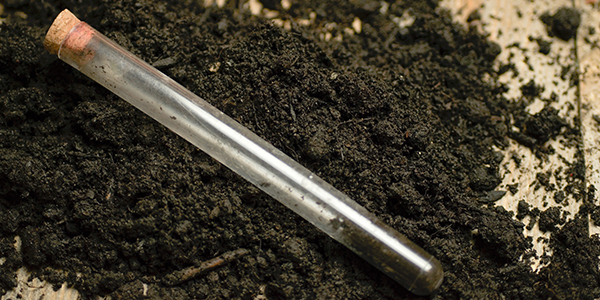
14 Dec Contaminated Soil: Reducing the Time and Expense of Site Remediation
In this 3-part series, ESA Environmental Consultants will share the secrets to minimizing the time and money spent dealing with contaminated building sites. Throughout the series, you’ll also find helpful strategies to reduce environmental liability and protect your real property assets. Part 1 of the series discusses remediating contaminated soil. Part 2 addresses how to cost-effectively deal with groundwater impacted by organic chemicals. And Part 3 covers the newest — and possibly the most pernicious and troubling — class of contaminants known as per-and polyfluoroalkyl substances (PFAS).
Before Remediating Contaminated Soil
When called to investigate an incident of potential soil contamination, with rare exception, ESA typically finds that the soil has been impacted either by heating oil, gasoline, chlorinated solvents, PCB, heavy metals, or pesticides. When dealing with any type of soil contamination, before taking any physical remedial action, we must first consider the following:
- What is the suspected source of the soil impacts?
- Were the impacts caused by the current owner or a prior owner? Or do they originate from an off-site source?
- Have the impacts been delineated both horizontally and vertically?
- What is the volume of material to be remediated?
- Is the material hard to reach? That is, does it exist below a building or is it in an area that cannot sustain prolonged disturbance due to critical operations (e.g., beneath an active airport runway or beneath the access to a hospital emergency room)?
- Is in-situ treatment logistically and financially feasible?
- Are circumstances favorable for compliance averaging?[1]
- Has the property owner explored options that could help pay for environmental remediation?
- Are the soil impacts associated with historic fill?
- Have site-specific environmental remediation options been developed to best meet the future-use goals of the property?
Contaminated Soil Removal
The simplest and most successful form of contaminated soil remediation involves removing the impacted soil from a property via excavation, transportation, and disposal (T&D). T&D provides several important benefits versus in-situ treatment:
- Speed. For many projects, and with proper planning, T&D can be performed in one or two days.
- Minimally disruptive. When properly managed, soil excavation often enables other site activities to proceed simultaneously. In most instances, businesses can continue to operate while remediation takes place.
- Economical: It is almost always less expensive to simply remove the impacted soil rather than employ more sophisticated (and costly) remedial technologies.
- Protects Groundwater: Because impacted soil contaminates surrounding groundwater, soil removal will almost immediately mitigate further groundwater impacts. Upon soil removal, natural attenuation of groundwater contamination will begin.
Final Points to Consider When Dealing with Soil Contamination
- In New Jersey, contaminated soil remediation must be overseen by a Licensed Site Remediation Professional. The LSRP will ensure that all work is conducted in accordance with New Jersey’s Site Remediation Reform Act (SRRA) and NJDEP Technical Requirements.
- Before your environmental consultant begins remediation, the source of the contaminant must be identified, and the pollutant must be stopped and/or removed at the point of origin. If the source is unknown, further investigation almost certainly will be required.
- Your environmental consultant will need to determine the horizontal and vertical limits of the impacts. Ordinarily, this requires a detailed investigation, but skilled consultants can limit costly and time-consuming investigations if, for example, the impacts are localized and have not migrated to surrounding groundwater.
- Groundwater impacts can cause significant extra expense and project delays. However, if groundwater IS impacted, an open pit created by soil excavation or tank removal can facilitate groundwater remediation. See Easier Groundwater Remediation for more details on this particular strategy.
- And finally, whenever possible, disposal approval should be obtained prior to beginning any soil excavation activities. Doing so enables the project to proceed on a “load and go” basis, meaning that impacted soil can be excavated and shipped on the same day. This eliminates a soil stockpile and excessive project delays, thereby reducing overall cost.
The Simplest Solutions are Often the Best
There are situations when sophisticated in-situ methods make sense for remediating contaminated soil. But technology-driven solutions frequently require much more time and money, and they often have limiting factors that can reduce the certainty of success. Consequently, for most projects, the simple soil excavation T&D approach will satisfy compliance requirements, save money, and reduce the project’s duration.
ESA is On Your Side
Regardless of the circumstances of an environmental soil impact, ESA’s unique, groundbreaking strategies are designed to minimize or even eliminate some of your environmental cleanup requirements and future environmental liability. And that, of course, saves a lot of money.
[1] Compliance averaging is a strategy in which contaminant concentrations are analyzed and mathematically averaged to meet compliance requirements. If used properly, this strategy can result in massive cost savings.



